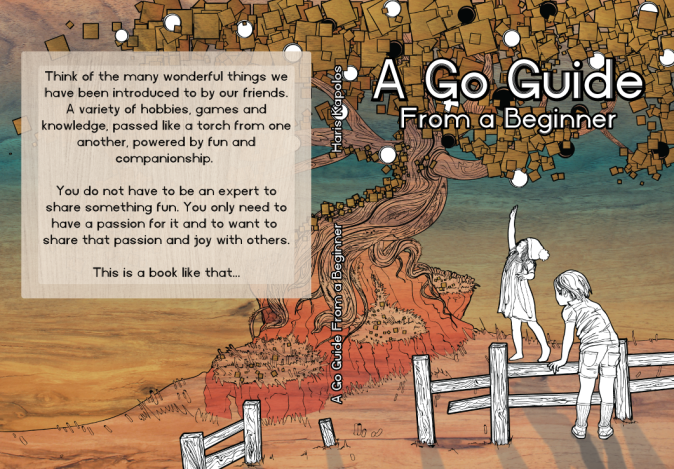Hi JethOrensin,
Thank you for sharing this huge work with the community !
I have read it until page 17, in English. My quick remarks after this short reading :
-The 17x17 size doesn't exist anymore.
-The table page 14 is unclear. The dead stones appear in both columns without explanation, and the beginner won't understand the multiplication by 2.
I think that the bare rule of play should be summarized in a separate part, near the beginning , without strategic concepts. I know that this is not something that we can see in any book for beginners, for two reasons :
-go is traditionally taught by a strong player, rather than through a ruleset.
-the most widely used ruleset (the japanese rules) are so complex that no beginner can understand them.
But here, if I understand properly, the goal is to have the game being discovered by people who live far from clubs and with no other resources than the Internet.
I have seen, at work people who had tried the game, but could not understand the rules, so they eventually gave up.
In practice, the problem with the japanese rule is that it demands dead stones to be removed before counting. But beginners can't identify dead stones. Therefore they are unable to finish any game without the help of a stronger player. This is a huge problem : how can you get interested in a game if you can't play it ?
In this context, I think that the chinese rule is better. But the AGA rule and its translations in France and UK is probably the best ruleset: it can be understood by a beginner (no need to assess life or death, we count all stones on the board), while still using territory, that is used everywhere on the Internet, and especially in go software, that the reader might try.
The French version is excellent, and should be suited for being learned without help, once re-translated in english: http://www.jeudego.org/_php/regleGo.php
I have written a more detailed version (see attached file, in french), without the explanations about eyes and seki, but with more explanations about capture. It might need to be rewritten before being included in a free project, because it contains parts copied from other sources.
About the rest of the book, I see that you introduce general strategic concepts before capturing tactics. This is very unusual, but I agree that in a book aimed at people outside clubs, it is very important to show that go is not just "capture one stone and you win".
Here are two examples.
One year ago, I was doing an initiation with a friend, and we had to introduce the game to 10-20 people at once, for about one hour. We were using the atari-go method. People were asking a lot of questions and we were running from table to table, doing the best we could. Then, an elder woman told me "I don't see any interest in this game". I didn't know what to answer, so she developed "this game is just idiotic ! I prefer playing cards." At that time, I didn't pay much attention, but later, I realized that we certainly omitted to explain that the "first capture" game was not really the game of go ! This woman could not guess.
Another story : at work, I introduced the game to my colleagues, and I always keep a 9x9 board in a drawer for pauses. After some week, a colleague, who is also a chess player asked me "what's the interest of go, compared to chess". This time, I was prepared, and I answered that what we were playing at work was NOT real go, but just mini-go on a mini-board, without any strategic aspect.
However, though I've not really read the next chapters of your book, I have the feeling that advanced concepts are introduced before basic ones. Maybe it would be useful to insert some exercises about liberties, atari, suicide, and then eyes, in the early chapters.
My reference books for beginners are Baduk For Beginners (Kim Sung Rae and Sung Ki-Chang) and also Learn to Play Go vol 1 & 2 (Janice Kim and Jeong Soo-Hyun). The later features much less exercices, but has a good example game in volume 1. It is important to have an annotated example game in a book for beginners.
Maybe it would be interesting to see in which order the basic concepts are introduced in these books, while keeping in mind a general view, in order to avoid giving the impression that go is just a capturing game.
|
